
All categories
Featured selections
Trade Assurance
Buyer Central
Help Center
Get the app
Become a supplier

(10232 products available)






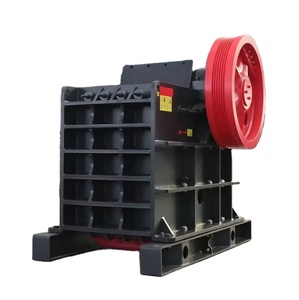







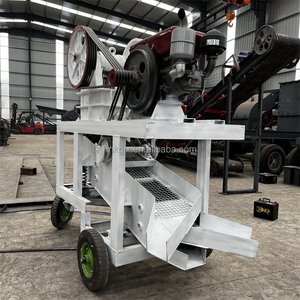
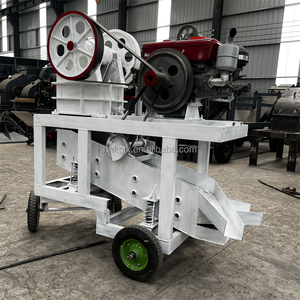
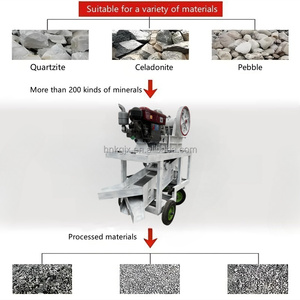

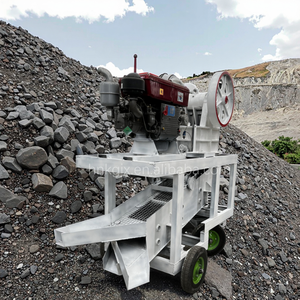


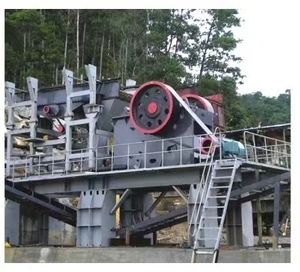























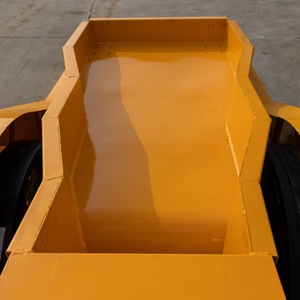



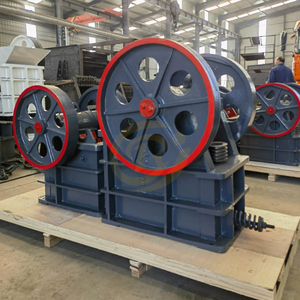


A jaw crusher is a sort of machine that breaks down bigger stones to smaller pieces. There are two plates that crush the materials in the machine, one of which is stationary, while the other is dynamic or moving. Jaw crushers are used in different industries for various purposes, and they come in different types.
Traditional jaw crusher
The traditional jaw crusher is one stationary and one movable plate called the jaw that exerts pressure on the stone. It is designed to break down big rocks into smaller ones. The traditional jaw crusher has now been designed into smaller counterparts that take up less space to do the same work.
Smaller counterparts
A mini jaw crusher and a portable jaw crusher are smaller machines designed to offer some flexibility and convenience for smaller-scale operations. These smaller models use the same technology with just smaller plates. Delivering to smaller industries and businesses is where these smaller models become helpful.
Older models
The Blake jaw crusher and the Dodge jaw crusher are older models. The Blake models have an eccentric driving shaft, while the Dodge model has a more straightforward mechanism with a fixed location and a movable jaw. While they are considered older models, many manufacturers are still using them and selling them.
Other versions
The single toggle jaw crusher and double toggle jaw crushers are more common types. The single toggle has only one moving part, while the double toggle has two. The double part mechanism allows for faster crushing of rocks, but it also uses a large amount of energy and is weaker than the single toggle.
The rugged design of jaw crushers makes them meet the demands of numerous industries. Hence, they break different types of materials used in the construction of buildings, roads, and other infrastructural projects. Below are some scenarios where jaw crushers are used.
Crusher machines are essential in the mining industry. They aid the production process by breaking massive ore into more minor, usable parts. Ore and mineral extraction involve several stages. Manufacturers use different types of machines to achieve them. Jaw crushers are preferred primary crushers in several mining industries. Their ability to reduce hard ores and rocks into smaller, more manageable pieces makes them a go-to option.
In the stone and gravel industry, jaw crushers hold a crucial place. They are the dominant primary crushers used to break natural stones like granite and marble into smaller sizes. The smaller stones become pebbles or gravel, which are commonly used in the building of roads and the production of concrete. The easy maintenance of jaw crushers ensures a smooth and efficient production process. This leads to steady supply to meet market demands.
Manufacturers of concrete and asphalt rely heavily on jaw crushers. They use them to break large rocks into smaller stones and aggregates. These materials are the major constituent of concrete and asphalt. The consistent size reduction and excellent control that jaw crushers provide makes them ideal for producing the exact material needed for high-quality concrete and asphalt.
Heavy-duty jaw crushers are popular choices for the demolition industry. They are used to break down concrete structures, buildings, and walls. The large capacity and strength of these machines enable them to handle tough jobs. After the demolition process, the jaw crushers convert concrete into reusable material. This process reduces waste and promotes sustainability in the construction industry.
The following tips will help business buyers to choose the right jaw crusher for their needs:
Consider the Capacity
Business buyers should examine the crusher's capacity to see how much it can crush at peak performance. Look at the crusher's output and feed size.Feed size is the maximum size of raw material the crusher can take. The raw materials a factory uses will affect these two factors. For instance, a wood crusher that processes fresh logs will have a different feed size and output compared to one that crushes TLCP pipes.
Track Operating Costs
Track operating costs include energy needs, replacement parts, and maintenance. A small-scale factory that processes used plastic may spend more on parts and electricity than a bigger one that processes larger volumes of raw plastic. Energy needs and parts costs vary based on the amount of plastic crushed.
For example, a stationary jaw crusher generally has lower energy needs than a portable one because stationary models don't need motors for mobility. However, a portable jaw crusher may be more energy-efficient due to advanced technologies like variable frequency drives that regulate motor speed according to demand.
Examine Repair/Replacement Parts Availability
The availability of repair and replacement parts is crucial for keeping the jaw crusher running. Suppliers should research parts availability before buying. Some suppliers may be able to negotiate better pricing based on their usual order volume.
Think About Automation
Automation in jaw crushers can cut operating expenses by minimizing repair needs. Features like self-diagnostics help in remote troubleshooting and timely maintenance, thereby reducing downtime. Automation can also streamline the overall process, thus helping to lower operating costs.
Evaluate Safety Features
Safety features of a jaw crusher help to reduce risk and improve productivity. For example, safety guards encase the flywheel and drive belt, thereby limiting access to moving parts. Training employees on jaw crusher safety must include schooling on the safety features and safeguards. This will enhance the workers' knowledge of the equipment and the safety measures in place. Workers will be better informed on how to use the machine safely. This will help to reduce accidents and risks to staff.
Q: What factors affect the performance of a jaw crusher?
A: Several factors can impact the efficiency of a jaw crusher. These include the material's hardness and size, the machine's design and capacity, the settings and adjustments made during operation, the lubrication and maintenance practices, the feeding technique, and the operating environment, including temperature and humidity.
Q: What are the safety tips for a jaw crusher?
A: Some safety tips for jaw crushers include wearing appropriate personal protective equipment, including hard hats, goggles, and ear protection; ensuring proper machine guarding to prevent accidental contact with moving parts; adhering to lockout/tag-out procedures during maintenance and preventing distractions and multitasking while operating the crusher.
Q: What are the types of jaw crushers?
A: There are three main types of jaw crushers: traditional, modern, and single toggle jaw crushers. The traditional jaw crusher features a fixed jaw and a swing jaw. The modern design has a more prominent crushing area with better throughput. The single toggle type has a swing jaw pivoted at the upper part and easier to install and use.